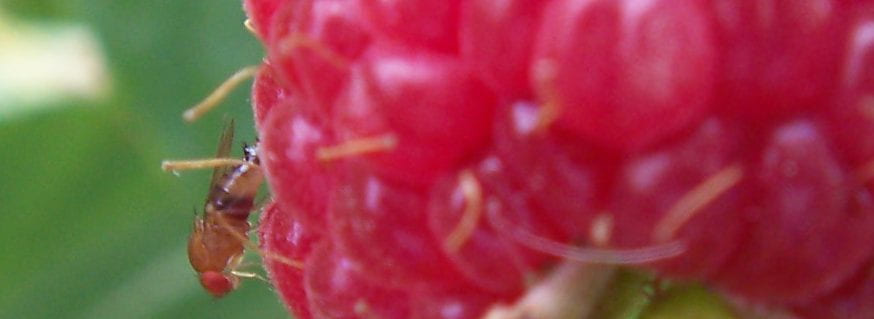A single male SWD was caught in one of four yeast-baited apple cider vinegar traps checked on July 8, 2014 and set in a summer raspberry planting, variety Prelude, in Onondaga County by Juliet Carroll, NYS IPM Program. Fruit is ripe and being harvested. At this time the SWD population is very low and although cultural practices such as harvesting fruits frequently and removing rotten fruits from the field will help keep the SWD population down, if susceptible fruit is nearby and ripening, it may prove judicious to consider planning for and beginning an insecticide management program. SWD populations and damage can increase dramatically with favorable weather and susceptible ripe fruits. The weather in central NY has been cool at night with daytime temperatures in the upper 70's and low 80's. Insecticide applications are necessary when SWD populations are high. Insecticides labeled for use in commercial berry production are tabulated on the Cornell Fruit Resources' SWD website. (Accumulated GDD 1169; day length 15:09)










